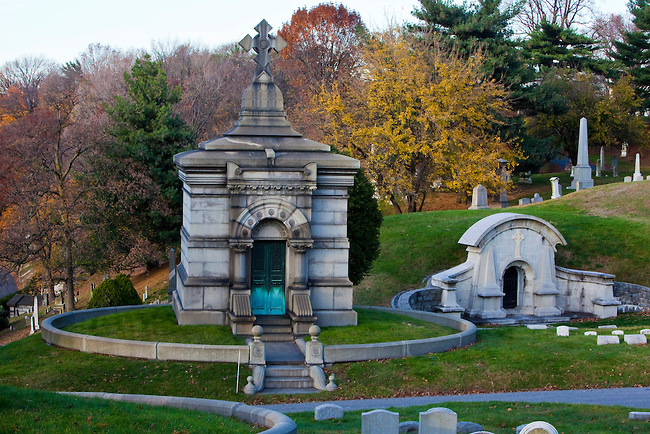
GREENWOOD CEMETERY.
PERHAPS some of you will ask,
"Where is Greenwood Cemetery?"
I will tell you; it lies only across the river from the great, live, bustling city of New York. From this noisy, living mart those who drop to sleep inthe arms of Death are carried to return no more, into a city as large, butoh, so silent! My father and mother, a dear brother, and other kind friends,are here laid to rest; and how many times have I stood by the lake in thisquiet city of the dead, and watched the willow trees droop their long tendrilsinto the quiet waters! What a beautiful spot it is, how lonely and retired! We can easily imagine the guardian angels of the dead gathering around us in such a spot, looking up from the shadowy waters, or whispering of the "sweet by-and-by" through the sighing, waving willows.
Space would fail me to speak of all the beauties of this sacred city; but just a few that have clung to my mind from childhood, and are pictured there, beautiful as memorials of the dead, will I mention. One is the Pilot'sMonument, which towers high enough to be plainly seen from the harborwhere long years ago the brave pilot lost his life from the angry tempest.
There is a beautifully natural, carved cable-rope attached to the monument,while at its base reclines a full-sized marble anchor, with a part of the cable
attached, showing by its jagged ends where it was broken from the other above. This tells the story simply and beautifully of how the cableparted and the ship went down, and the brave pilot with it.
The French Girl Monument is also a most exquisite piece of workmanshipin white marble, the life-sized figure of the beautiful girl being almost hidden in the sanctuary of the marble tomb, among a delicate net-work ofspiral columns and church-like vestibules.
She is represented as the bride of Death, her fate as a bride being a very sad one in life. Just married to the man of her choice, they were on their way from the sacred edifice to her home, when the spirited horses took fright and ran away. The bride was thrown out and instantly killed.
The sorrowing husband escaped unharmed, but his grief was so deep thathe had this monument set up to her memory at an enormous expense; and it is said that until his death he would haunt this spot with unabated grief.
The next that I remember with peculiar interest is the Twin Monument.
This consists of two monuments made exactly alike and attached to each other. It is dedicated to two little children who lost their lives in the burning of the Greenwich-Street School of New York many years ago.
They loved each other so dearly that in the attempt to save them from a most perilous position, where it was impossible to save both at the same time, each held back, refusing to be saved before the other, until both were lost in the fiery flames. They now sleep in one grave, with these words carved on the entwining arch: "Loving in life, and together in death."
Beautiful vines have climbed up all over these twin monuments, and have intertwined just as the hearts of the loving little ones were intertwined in life. How joyful will be the resurrection to these innocent but brave and unselfish children! The fearful agonies of their death in that terrible fire all past and gone, the beautiful face of the risen Saviour will shine upon them as they rise together and are borne by their guardian angel, clasped in each other's arms, to the great shining City of God, no more to be parted by death.
Everywhere, pastures of flowers, rippling fountains, and marble urns o'erloaded with blossoms, mark the resting place of the child of fortune; but farther on, where the trees are less thickly planted, graves lie close together, close as the rows of tenement houses in the city of life beyond, for there is only the six feet of earth and the grass that covers it. Here strangers lie side by side, so near that one coffin-side almost touches another coffin-side. Here and there a tiny slab of marble standing stark and upright, with its still smaller foot-board, tells the name of the one below.
But we pass on, uninterested, pausing now and then to glance at a simple bouquet laid by some loving hand on one or another plaster tomb, or some tiny relic that poverty has laid with sacred feeling, on that sacred spot.
In thy bosom, O Greenwood, thousands, yea, millions are sleeping; the wicked and the good perchance slumber side by side, but "in that day" the tares will be separated from the wheat, rich or poor, it matters little!
God knoweth his own. Yes, Greenwood, beautiful Greenwood! Wealth and poverty are well-defined in this, the city of the dead. But, thank God!
wealth can go no farther; and in the resurrection, poverty will stand by its
side.
MRS. ELIZA JONES.